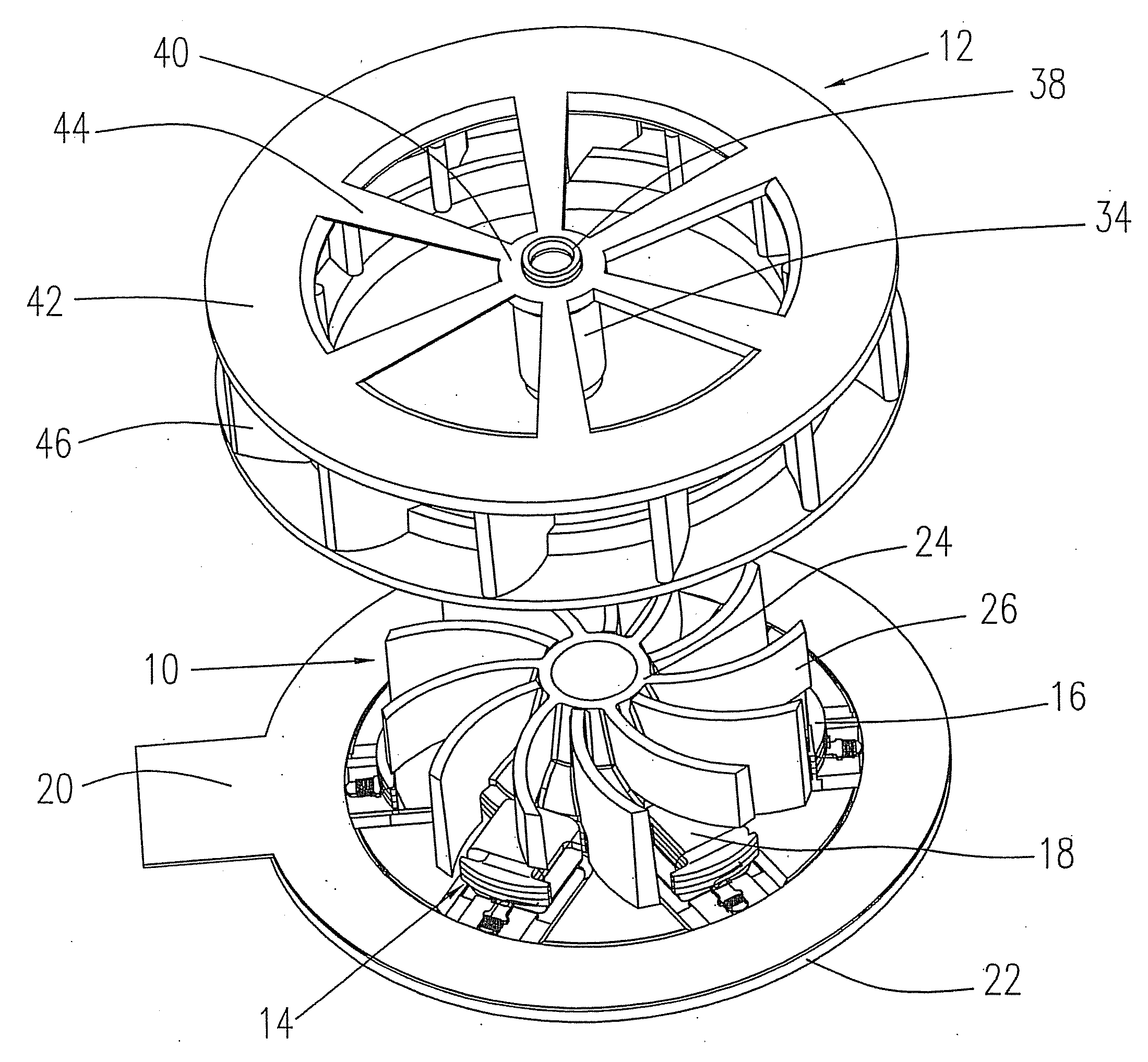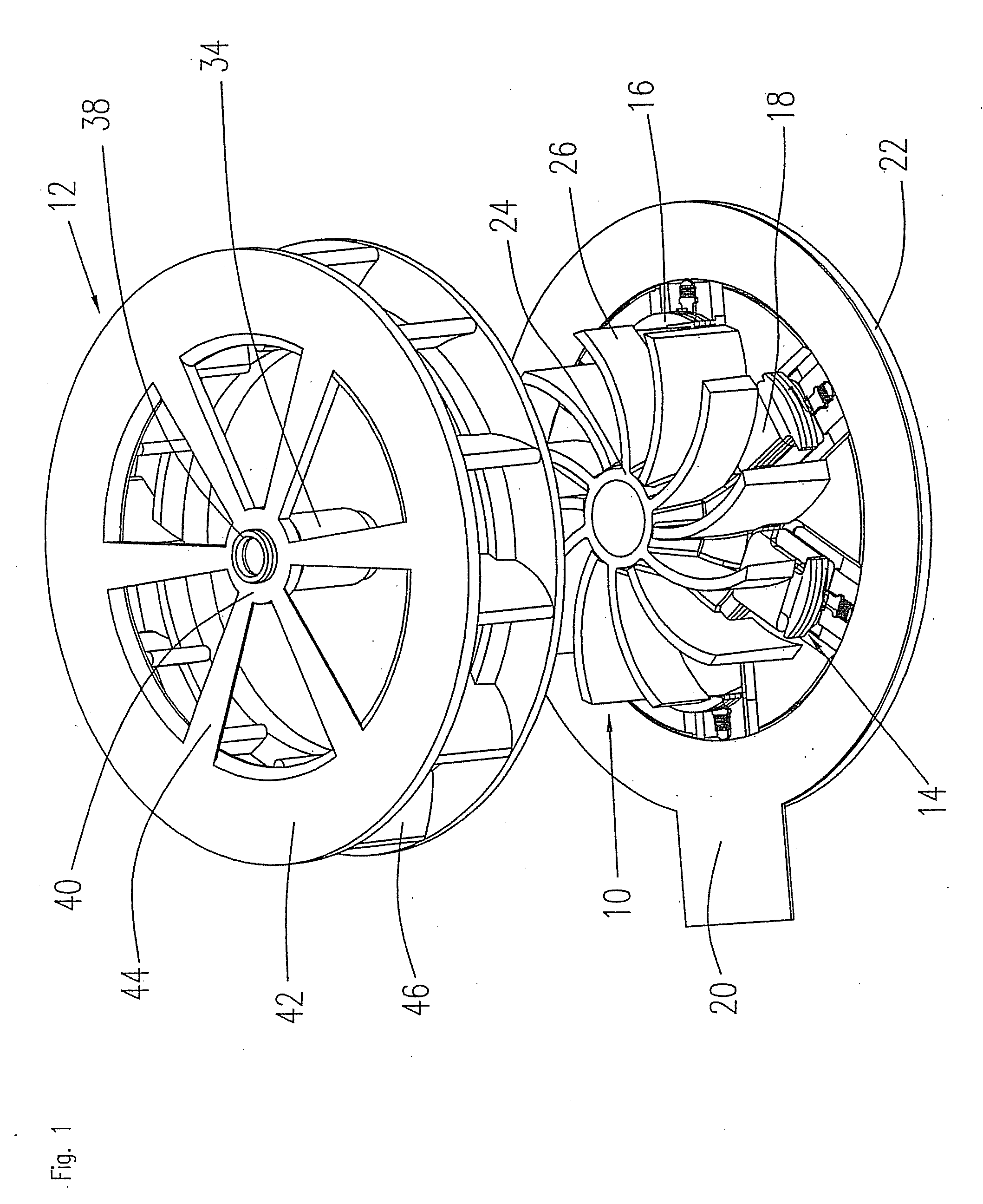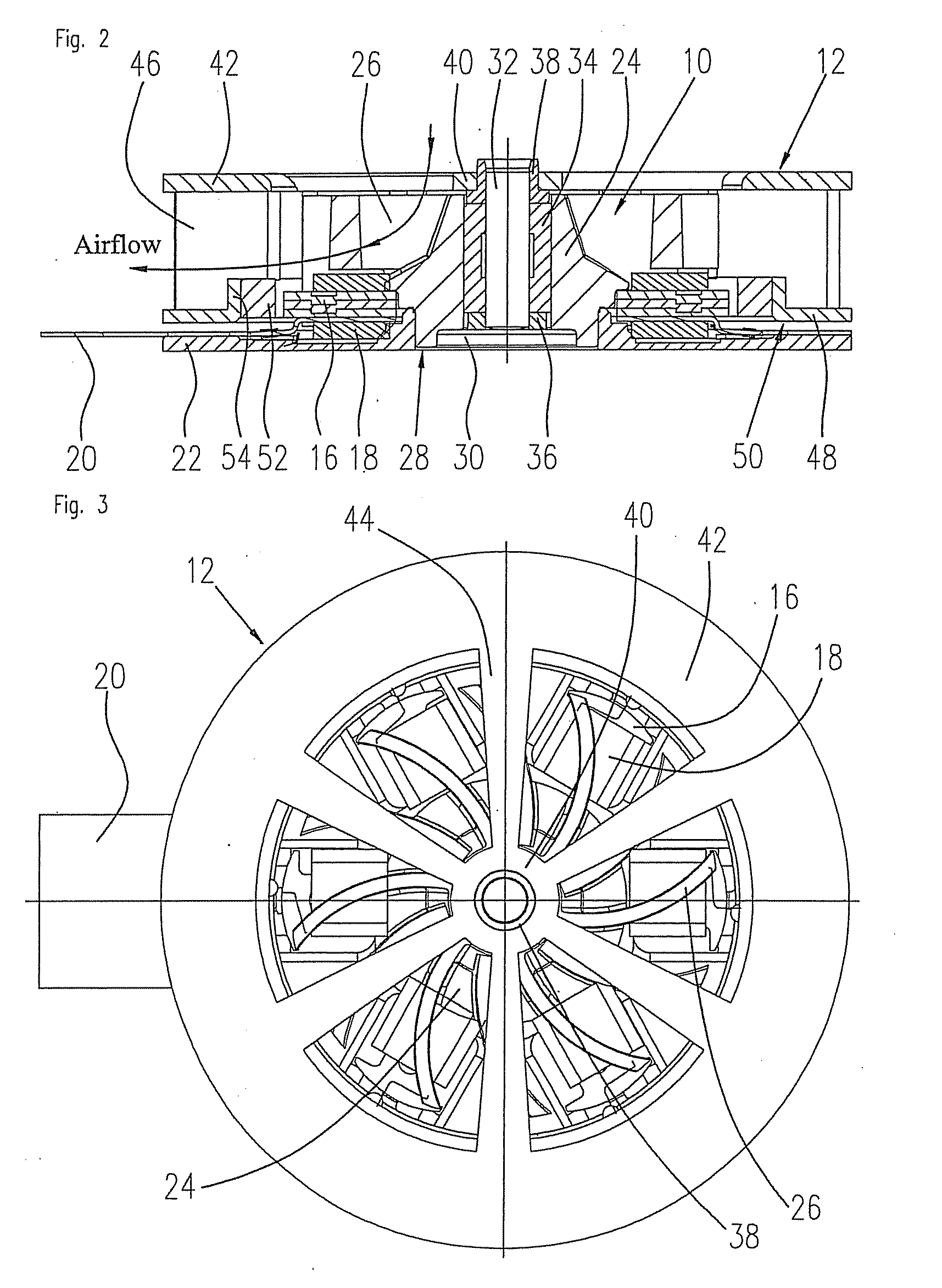Cooling apparatus for an electronic device to be cooled
a technology for cooling apparatus and electronic devices, which is applied in the direction of magnetic circuit rotating parts, piston pumps, magnetic circuit shapes/forms/construction, etc., can solve the problems of inefficient cooling effect of cooling units according to us2006/0021735a1, drawing a limited amount, and general inefficiency of radial flux machines, etc., to achieve compact construction, increase flow rate, and optimize airflow
- Summary
- Abstract
- Description
- Claims
- Application Information
AI Technical Summary
Benefits of technology
Problems solved by technology
Method used
Image
Examples
Embodiment Construction
[0021]FIGS. 1 to 3 show a preferred embodiment of a cooling apparatus according 1-5 to the invention. The cooling apparatus comprises a heatsink 10, an impeller 12 and a drive motor 14 of which only the stator 16 is illustrated in FIG. 1. In the illustrated embodiment, the stator 16 is represented by a stator stack or lamination stack having six poles on which stator coils 18 are mounted. The terminals of the stator coils 18 are connected to a circuit board 20 that may also carry sensors to measure the position of the rotor or the heat of the baseplate.
[0022]The stator 16 is seated on a baseplate 22 into which the heatsink 10 is inserted. The heatsink 10 comprises a hub 24 and cooling fins 26 that are curved like fan blades such that on rotation of the impeller 12 they follow the swirl of air produced by the impeller. In the illustrated embodiment, the hub 24 of the heatsink 10 takes the form of two cones placed one on top of the other so as to form the largest possible base 28. In ...
PUM
 Login to View More
Login to View More Abstract
Description
Claims
Application Information
 Login to View More
Login to View More - R&D
- Intellectual Property
- Life Sciences
- Materials
- Tech Scout
- Unparalleled Data Quality
- Higher Quality Content
- 60% Fewer Hallucinations
Browse by: Latest US Patents, China's latest patents, Technical Efficacy Thesaurus, Application Domain, Technology Topic, Popular Technical Reports.
© 2025 PatSnap. All rights reserved.Legal|Privacy policy|Modern Slavery Act Transparency Statement|Sitemap|About US| Contact US: help@patsnap.com



